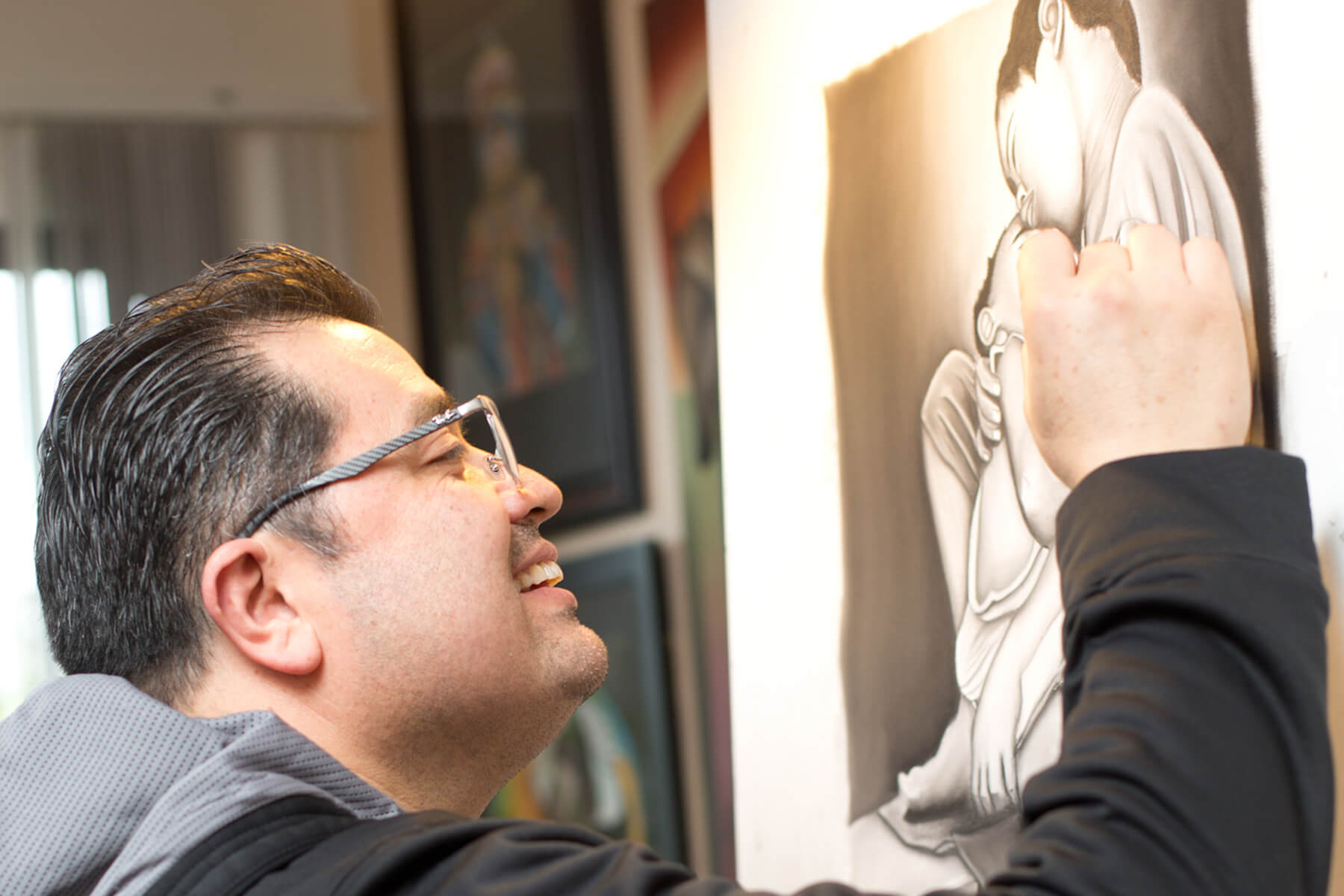“With this surgery, I was walking in about 24 hours, and I felt like I could return to my normal life within a month.”

Minimally invasive spine surgery helps Plainsboro man feel like himself again
The human spine has a big job. It keeps our heads high, provides a balance between the many dimensions of our bodies, and acts as the main thoroughfare for the nerves in our bodies to communicate with our brain. The spine is the keystone of our body structure—and it does a fine job.
The down side to this amazing feat of nature: when something’s wrong, boy, do you feel it.
From the Spine on Down
Juan Carlos began feeling it years ago.
“I started out having small pain here and there—maybe once or twice a year. I just called it ‘the effects of aging.’ Then over about three years, the pain just got worse and worse,” Juan Carlos recalls.
Eventually, there was “no comfortable position.” Walking with his daughter, driving for work, even when seated at the canvas, where his passions come to life, Juan Carlos would feel the pain.
The mysterious pain, however, was not only in his back anymore, but also in his left leg—a complaint that is not uncommon for individuals living with a spine injury.
Marc J. Levine, MD, medical director of RWJ Hamilton’s spine surgery program, explains.
“Because the spine is the conduit for the transmission of nerves from the brain all the way throughout the body, an irritation of the nerves along the spine will cause pain all along the pathway the nerve travels,” Dr. Levine explains. “So if your nerve in the low back is being compressed, the pain will present down the leg.”
The Root of the Problem
The pain was affecting every aspect of Juan Carlos’ life, and it was time to do something about it.
After much research, Juan Carlos and wife, Lourenza, decided to see Dr. Levine to find out what was going on, and what to do.
Dr. Levine discovered the source of Juan Carlos’ pain was a combination of disc degeneration in his lower back (lumbar spine), and bone spurs causing a narrowing of the tunnel surrounding the nerve root.
“Our nerves communicate problems to our brain. Nerves, to some extent, exist in a tipping-point situation. They can handle a certain amount of pressure, and then you hit the point where it can no longer take the pressure and it translates to a painful situation,” explains Dr. Levine.
When this pain is enough to bring an individual in to meet with a surgeon, there are several options available to help before surgery. These non-surgical options include oral anti-inflammatories, physical therapy and pain management injections.
“When these options are exhausted, surgery can be discussed,” says Dr. Levine. “It’s a discussion the patient and surgeon have about his or her individual situation.”
Minimally Invasive
Dr. Levine and Juan Carlos concluded a minimally invasive surgical approach would allow Dr. Levine to free up the nerve root. For certain patients, minimally invasive spine surgery is a great option because it minimizes disruption to the skin and muscle tissues—leading to reduced recovery time and pain.
“To adequately decompress the nerve root, we had to take off the joint, place a device that looks like a small cinderblock where the disc was removed and add screws and rods to stabilize the spine,” explains Dr. Levine.
“In a minimally invasive surgery, this is all done through small incisions on either side of the midline of the spine, and with the help of special retractors and tubes.”
According to Juan Carlos, whatever needed to be done worked. He reports feeling nearly 100 percent better.
“The last thing you want to lose is your independence,” he says. “With this surgery, I was walking in about 24 hours, and I felt like I could return to my normal life within a month.”
TO LEARN MORE ABOUT SPINE SURGERY, CLICK HERE.